Travels in New Zealand: Week Three
Wellington – Cook Strait – Nelson – Kaikoura – Christchurch – Home
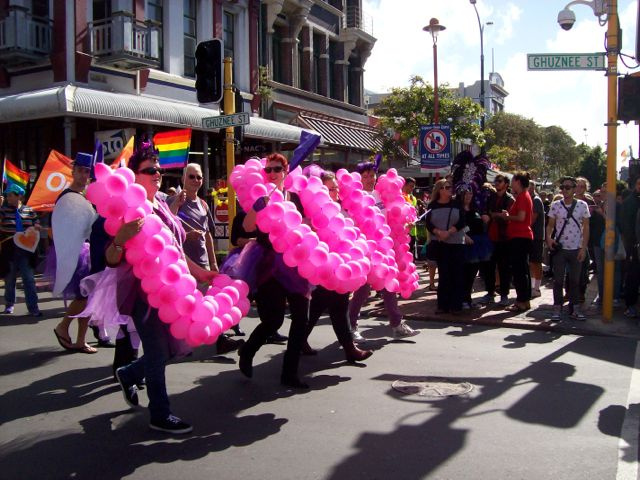 * An eclectic mix of music to serenade us into the last week. Marching bands, whistles and electric guitars at a Wellington Mardi Gras, where we found ourselves caught up in a Gay & Lesbian street parade. A fine blues singer around the corner. And soaring above the bustling noise of Cuba Street, members of a brass consort standing on three opposing shop verandas playing Gabrielli. Venice, 1600.
* An eclectic mix of music to serenade us into the last week. Marching bands, whistles and electric guitars at a Wellington Mardi Gras, where we found ourselves caught up in a Gay & Lesbian street parade. A fine blues singer around the corner. And soaring above the bustling noise of Cuba Street, members of a brass consort standing on three opposing shop verandas playing Gabrielli. Venice, 1600.
* Three drag queens in white and gold graced a performance of Maori and Chilean fusion music at the Te Papa Museum (there is certainly the Pacific bond). And finally, on the Interislander Ferry across Cook Strait, some travelling musicians entertained us with some splendid early American fiddle music. Spirited and with origins in the shanties and dances of both Old and New Worlds, it was the very thing for a sea voyage.
*Of course we had to sleep in, didn’t we, when I failed to set the alarm properly. Woke up at 7 o’clock – and the taxi was booked for 7.15! Can’t remember when we last moved so quickly. Fortunately we’d done the packing 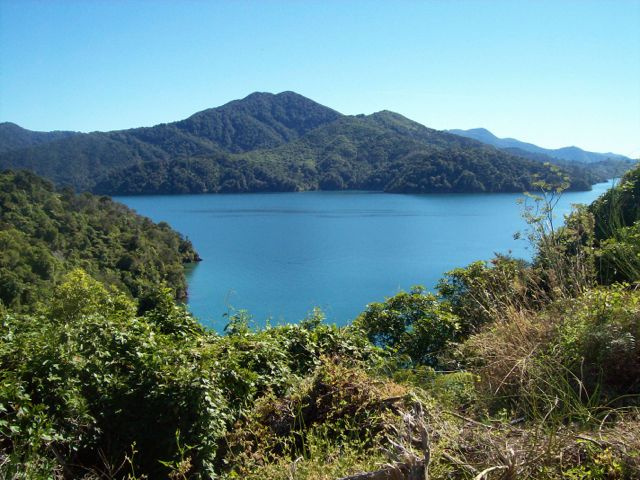 the night before. Even so, Jill went white, I went red – and thus being in the pink we were in the lobby just in time, and standing on the ferry wharf ahead of ourselves. We’d even managed to gulp a mouthful of tea. Not bad for a couple of old ‘uns.
the night before. Even so, Jill went white, I went red – and thus being in the pink we were in the lobby just in time, and standing on the ferry wharf ahead of ourselves. We’d even managed to gulp a mouthful of tea. Not bad for a couple of old ‘uns.
*Last time I was in Queen Charlotte Sound, researching Captain Cook, it was grey and stormy. This time it was dazzling blue and green. The sea calm. The wind fair. And the views, as we drove around the bays stunningly beautiful. You can see why Cook returned here on each of his South Pacific voyages. Not so pleasant the steep, mountainous descent into Nelson, where sadly much of the native forest has been removed for pine plantations. Which explains the presence of so many heavy logging trucks!
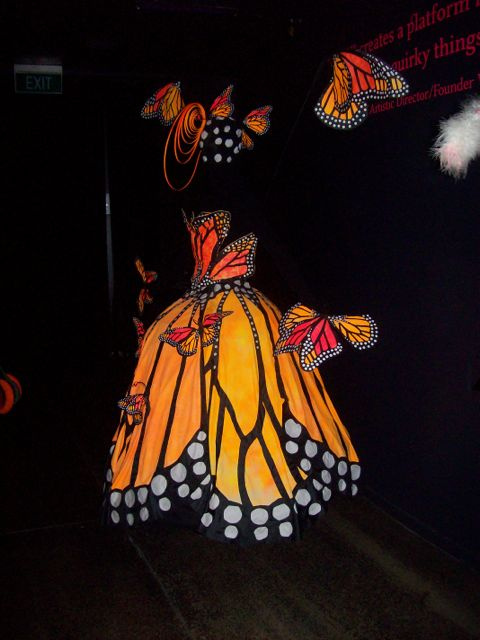 * We’re in Nelson to see the WOW (World of Wearable Art) Museum – a subject in which Jill, as a textile artist, has a great interest. Over the past two decades New Zealand’s annual creative costume showing has grown to a truly international event. Several friends, in fact, have successfully entered in recent years.
* We’re in Nelson to see the WOW (World of Wearable Art) Museum – a subject in which Jill, as a textile artist, has a great interest. Over the past two decades New Zealand’s annual creative costume showing has grown to a truly international event. Several friends, in fact, have successfully entered in recent years.
The three dozen or so costumes on exhibition (including at the co-located Classic Cars Museum) certainly show great imaginative breadth in their conception and the materials used: zips turned into fabric, plastic tie strips, wood, metal, corks, paper, even party balloons … all have been used to remarkable effect.
There’s a dress made from a coil of soft wooden rope … another with wooly sheep leading all the way up to a shearing shed at the top … costumes that dazzle under fluorescent light … an extraordinary dragon stage costume, and so on…
* Even so, the museum was not as comprehensive as we’d been expecting. There was very little information that we saw on display about the history of WOW, or background easily available to visitors about past section winners and their garments. There seemed plenty of room in the large foyer for some interactive technology that would help people access the large WOW archive and database. It might be worth thinking about.
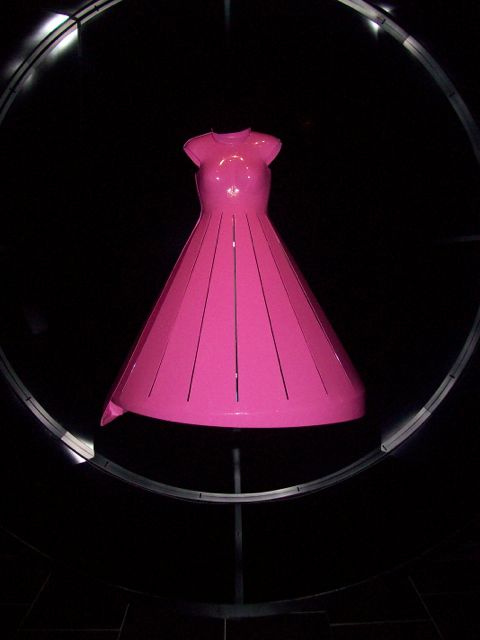
* We were therefore very glad that we saw a major WOW travelling exhibition of recent costumes at the Auckland War Memorial Museum, shortly before it left on an international tour. The pieces here were at a very high level … among the very best of recent WOW showings. A pink dress made out of fibreglass stays in the mind … a garment modelled as a gothic cathedral … a lobster … a gown fabricated from pierced, painted and shaped aluminium … an astonishing dress like a yellow lampshade… I don’t know how comfortable many of them would be to wear in a conventional sense. But as examples of creative flair and artistic imagination, they certainly excite the response WOW!!
*So to the last leg, back-tracking on ourselves a bit as we drove to the east coast and the highway down to Christchurch. The hills very winding again until the vineyards around Blenheim (such fresh, aromatic sauvignon blanc), and again through the ranges towards 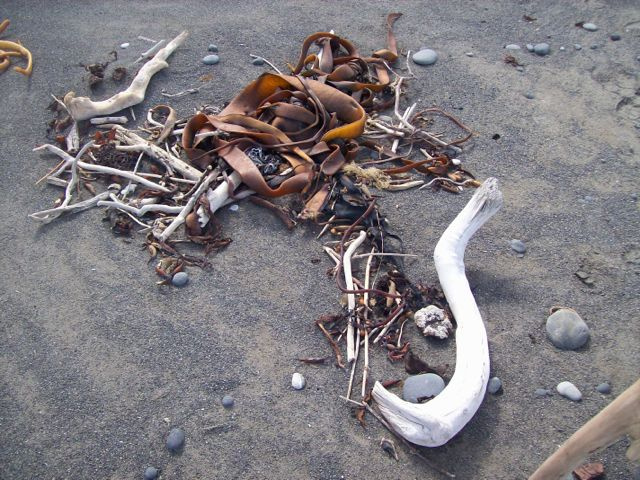 Kaikoura. Spectacular scenery, though, the road and railway line skirting the littoral: long, empty beaches of black volcanic sand, sea birds, dolphins leaping offshore, and everywhere, as if arranged by an artist, still lives of driftwood, seaweed and round, dark stones cast up by the ocean. Kaikoura is known for its whale-watching and crayfish. Alas, the last afternoon whale boat had stopped for the season, and no fresh crays had been caught for three days. But we dined excellently on local fish all the same.
Kaikoura. Spectacular scenery, though, the road and railway line skirting the littoral: long, empty beaches of black volcanic sand, sea birds, dolphins leaping offshore, and everywhere, as if arranged by an artist, still lives of driftwood, seaweed and round, dark stones cast up by the ocean. Kaikoura is known for its whale-watching and crayfish. Alas, the last afternoon whale boat had stopped for the season, and no fresh crays had been caught for three days. But we dined excellently on local fish all the same.
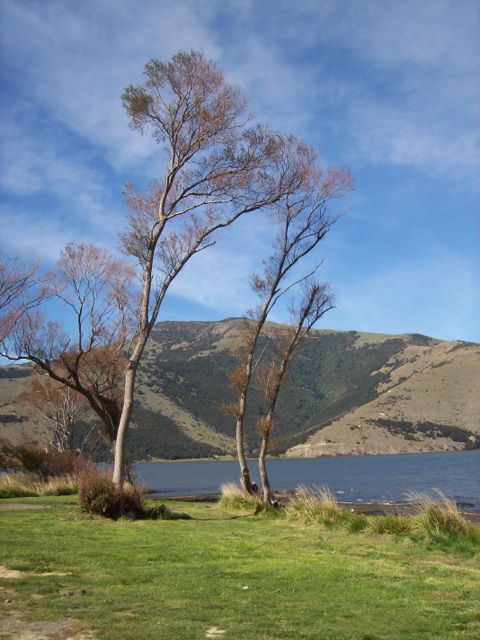
* The country hereabouts is also in drought; and the grass-green sheep hills and emerald Canterbury Plains we expected, are more the burnt russet brown we’re used to in Australia. The wide rivers now are mostly stone beds with a thin stream running down the middle.
We were struck, too, by the absence of much forest cover on the hills, apart from the ubiquitous pine plantations. How much of this bald landscape is natural below the snow line, and how much is man-made it’s impossible for us to know; but we were told that most of the original forest (other than the major valleys) was cleared over the past century or so for grazing, a practice now yielding hard returns with the present lack of rain.
Even Cyclone Pam, for which everyone was battening down as we left home, failed to produce many significant falls.
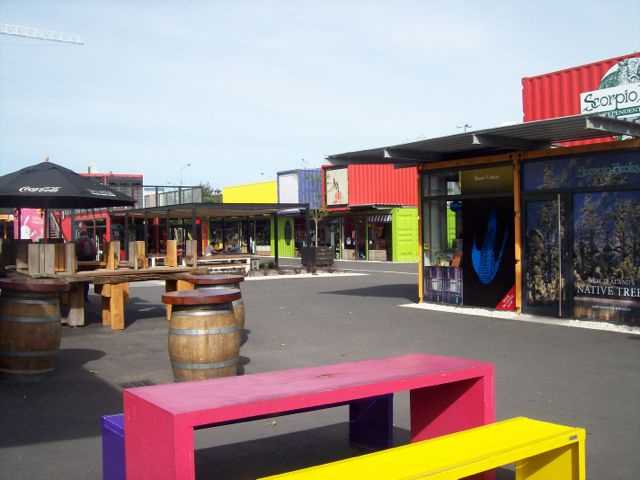 * Christchurch, I have to say, seems a very sad city. Four years after the earthquakes, in which over 180 people were killed, there is still a sense of grief – a void – in the townscape and its people, as if the heart had been knocked out of the place. “A broken city” the local Press calls it, and they’re right – metaphorically and in fact. There are still many gaps in the central part, like missing teeth, where buildings have been demolished and reconstruction not yet started. Some still stand damaged and vacant. Elsewhere you can see the framework for new offices going up, and before long the brightly painted shipping containers used as shops under the Re:Start program will probably begin to go. It was a great example of the spirit of self-help, and I hope they retain some of those shops as a memorial when the city is rebuilt.
* Christchurch, I have to say, seems a very sad city. Four years after the earthquakes, in which over 180 people were killed, there is still a sense of grief – a void – in the townscape and its people, as if the heart had been knocked out of the place. “A broken city” the local Press calls it, and they’re right – metaphorically and in fact. There are still many gaps in the central part, like missing teeth, where buildings have been demolished and reconstruction not yet started. Some still stand damaged and vacant. Elsewhere you can see the framework for new offices going up, and before long the brightly painted shipping containers used as shops under the Re:Start program will probably begin to go. It was a great example of the spirit of self-help, and I hope they retain some of those shops as a memorial when the city is rebuilt.

* It will be a long time, however, before Christchurch is properly healed again. The conflict between the desire to retain what was and the need to rebuild the new, is a real and painful one for many people. Some of the older structures are still propped up with massive steel girders, chief among them the gothic cathedral, which still looks like a war zone, after the tower and much of the facade collapsed.
It was Good Friday when we were there, and some young people were holding an Easter service in the square nearby; but other parishoners just sat outside the perimeter fence with us tourists and mourned the old building they loved. The debate still continues on whether to rebuild the cathedral in bluestone as it was, or to incorporate what can be salvaged in a modern, wooden structure: and certainly the colonial wooden buildings withstood the quake better than many of the stone ones.
It’s something only the local people can resolve, but you can’t escape the fact this is a volcanic region, and another shock may recur.
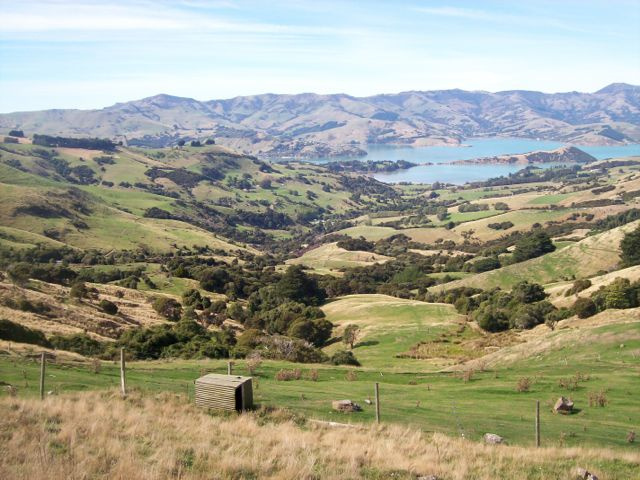
* Our last day-trip, for example, was to Akaroa at the foot of the Banks Peninsula: it’s actually the crater of a huge volcano where the sea has entered, so deep the Queen Mary anchored there before we saw her at Waitangi. It was a nerve-wracking drive for me up the mountain, and when we reached the Hilltop pub at the summit, we saw there was another 18 kilometres to go down the other side before we reached the town. We stopped. Lunched on Akaroa salmon as we sat on the hotel lawn admiring the view. And then went back. Young people say they enjoy the steep winding roads: it makes them feel as if they’re on a road rally. Me, I prefer the straight and very wide. If we ever get to Akaroa it will be by ship.
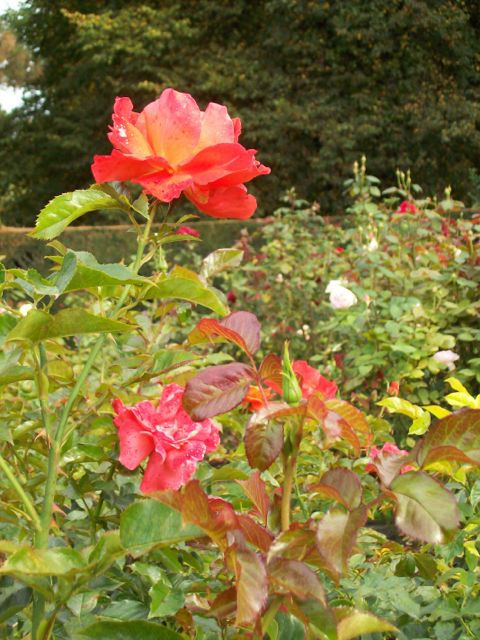
* And finally a bouquet. I was cursing Sydney International Airport when we left: but coming home they did us proud. The plane was late leaving Christchurch (“sandstorms in Dubai” we were told), and we had only an hour to disembark, get through Customs and catch the bus to the domestic airport for the last plane to Canberra.
True, it was night and there weren’t many people; but the staff pulled out all stops to get us through quickly, and we made it. With five minutes to spare.
Sincere thanks. And also to my cousin, who was waiting to drive us home – with a basket of food to see us through the first night again, under our own roof.
Captain Cook rose, Christchurch
